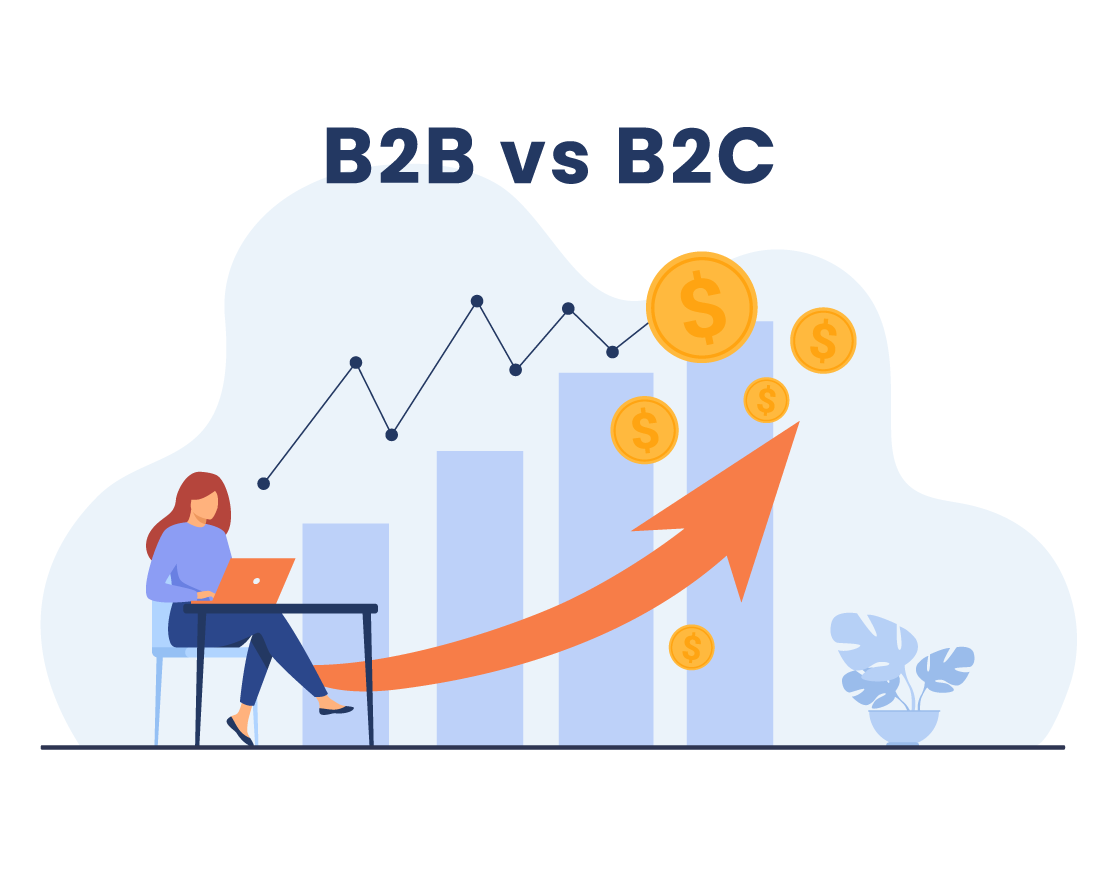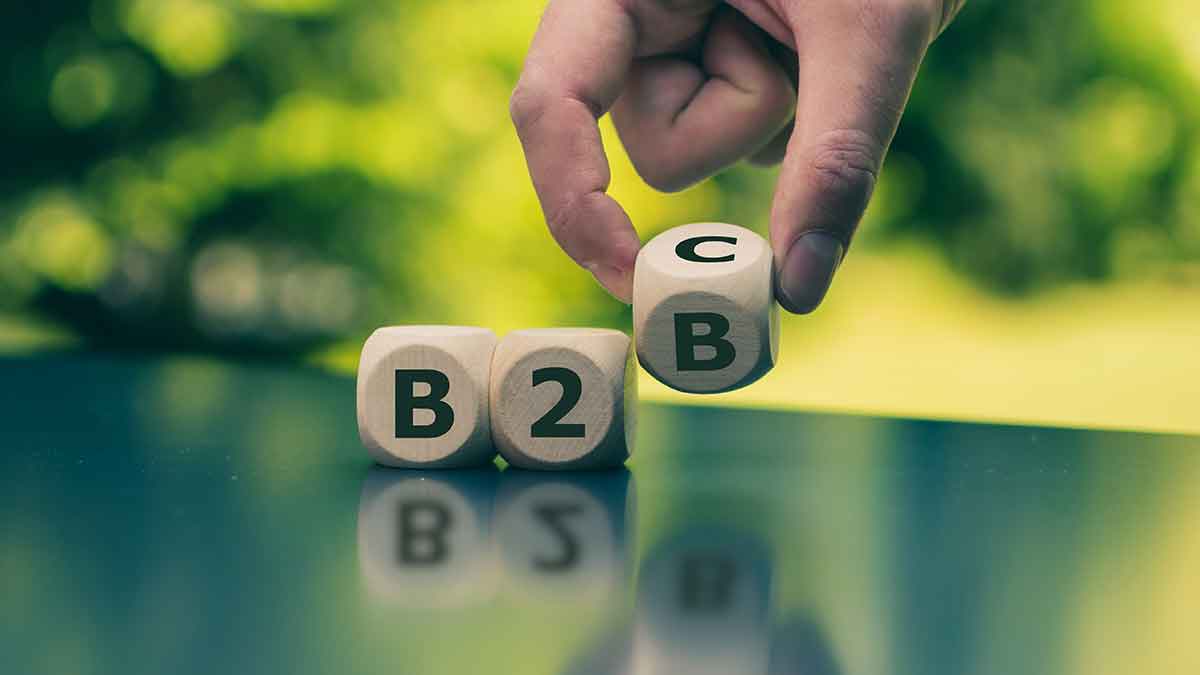What is a Buyer Persona?
A buyer persona is a semi-fictional character that represents a slice of your target audience.
It’s somebody with all the traits of a real client of your business, with all the relevant information for your strategy.
So, instead of focusing on “men and women, ages between 25 and 30, middle class”, we would target Bradley, who is a 27-year-old aspiring marketer in a medium-sized firm. You can further discuss Bradley’s traits, such as his need for a way to fit more studies into his schedule and desire to become head of marketing.
Working with a buyer persona is different from using traditional target audiences.
After all, it’s a more specific look into a portion of this public. In addition, it has valuable data about their motivations, needs, desires and others, which help you come up with the right approaches.
Depending on your business’ field, you might need to add specific pieces of information to your customer persona.
It’s also important to differentiate B2B buyer personas from B2C. You’ll learn more about it further below.
Why is it Important to Work with Buyer Personas?
Developing buyer personas for your strategy is critical for your results.
This is the best way to make sure every element in your campaigns work. It’s things like tone of voice, visual elements, type of content, best media channels, and others.
Such usefulness is due to how specific the information is on a buyer persona.
By knowing exactly what their motivations and needs are, you can create the best marketing and sales approach to convince them about your product. If you choose a vaguer target audience, this job becomes harder.
Working with buyer personas also helps you deepen your knowledge about your product’s value.
After all, you are able to see the positive effect it has on the people you try to reach. By seeing how these people interact with your business, you might acquire valuable insights about your services.

Lastly, having buyer personas is a great way to empathize with your target audience. By understanding their fears and needs, you are able to strengthen your relationship with them.
7 Types of Personas
In many cases, when developing buyer personas, you want to focus on core features like age, marital status, income level, and gender. However, you can also categorize different personas into broader classifications. Here are seven different classes you can use to determine which type of persona you want to build, and then narrow down your search from there.
1. User Persona
A user persona reflects all the potential users of a specific product or service. So, you want to be relatively broad without being vague, but also focused without being too niche.
This persona type helps you understand who uses your product, even if you have multiple versions or tiers. For example, let’s say you have a freemium version of your software and a paid version. A user persona focuses on anyone who would be interested in the program, not just those who are willing to pay for it.
The benefit of using this persona type is that you can understand who wants your product and then figure out ways to nudge them into becoming paid customers.
2. Buyer Persona
Technically, we’re discussing all kinds of buyer personas, but this classification focuses on a holistic approach to marketing to a specific user or demographic. A buyer persona is someone who makes the final decision, but they have more to consider than just whether the product will fill a specific need right now.
Buyer personas are helpful for B2B companies because they encompass the decision-makers, not just those at the lower levels. So, developing this persona allows you to focus your energy on getting managers and executives to say yes to your product so you can close the deal.
3. Customer Persona
If you’re already running a business, you can develop a persona based on the people who are buying from you already. While there will always be some outliers, you can likely create a pretty compelling persona based on information you already have.
The primary purpose of developing this persona is to understand who likes your product currently and sell to more people that fit the profile. The second purpose is to help your existing customers get more value by expanding their purchases with your company. After all, if they’re already on board with what you’re selling, they’re more likely to take a chance on something else you have to offer.
4. Proto Persona
This category is helpful if you haven’t launched your business yet but know who you want to buy your products. A proto-persona is an “ideal” customer, but you still want it to be realistic. For example, if you aim too high in the persona’s income level or pain points, it’ll be much harder to appeal to real people who may be interested in what you have to offer.
Another point to remember about proto-personas (and all buyer personas) is that you don’t want to get too into the weeds with their background. Yes, it helps to know a bit more about someone’s life and why they want what you’re selling, but knowing too much “trivia” won’t help you close sales.
5. Audience Persona
Usually, a buyer persona is reflective of a single person who might represent a niche demographic. An audience persona takes a step back and groups people based on broader interests and pain points.
To develop an audience persona, you use market research and data to compile into a general idea of the type of person who may want your product. So, you’ll have an age range, a set of interests, and generic pain points, but nothing too specific. Audience personas are great for branching out into new markets, but you’ll need to narrow your focus as you move forward with your marketing campaign.

6. Marketing Persona
As with an audience persona, a marketing persona is broad and somewhat vague. The idea behind developing this persona is if you’re not sure who specifically will be interested in your product, so you need to cover a wider range of individuals until you can narrow them down.
Marketing personas are usually based on a handful of data points, like age, income level, and job description. From there, you can develop individual personas to ensure you can target niche groups within the larger demographic.
7. Student Persona
This persona only works if you want to educate individuals, such as if you run a cosmetics or bartending school. In this case, you have to understand why that individual is enrolling in your course and what they hope to get out of it. You must also address unique pain points such as having a full-time job, having a limited income or budget, and their availability. For example, what if your ideal student has children and can’t get childcare during the week?
The Difference Between B2B and B2C Buyer Persona Examples
Marketing as a B2B company is much different than a B2C enterprise. So, you need to develop unique buyer personas for each situation so you can adapt to their individual and specific needs. Here’s a quick breakdown of the various ways that B2B and B2C personas differ from each other.
- Short vs. Long-Term – A customer may purchase a product or service for an immediate need or for something that they plan to do in the near future. For example, a person may buy cleaning products to help them clean their kitchen or bathroom. A B2B client, however, is mostly focused on long-term goals. Typically, the product or service will be ongoing and address specific problems with a company’s daily operations, not a one-time issue.
- Individual vs. Company-Based – A single customer is the sole decision-maker when agreeing to a purchase. So, your sales team only has to appeal to their interests and needs to close the deal. With a B2B enterprise, though, many people can be involved in the decision, and individual needs rarely come into play. For example, just because one person likes the product doesn’t mean everyone will approve of buying it. If it doesn’t improve the bottom line, it’s hard to justify its purchase.
- Rationality vs. Emotion – There’s a strong misconception that B2B clients never use their emotions when making a purchase decision. While this isn’t entirely true, the myth likely stems from the fact that these clients can’t make decisions on impulse. So, while emotions can come into play, the client can’t pull the trigger immediately. Because the B2B sales process is lengthier, these emotions and pain points must be sustained, so it seems more rational once the deal is closed. Individual customers, though, can make impulse purchases based on how they’re feeling right now, so salespeople can appeal to their emotional state more easily.
Overall, B2B buyer personas are more complex and multi-faceted, while B2C personas can be based on specific needs and circumstances. Customers may have to buy something right now, but their situation will change in a few months or a year, so they won’t need that product later on.
Here are a couple of broad examples of B2C and B2B personas to help cement these differences:
B2C Personas
- Single Mother, Mid-30s – This persona has to juggle so many responsibilities during the day that she feels stressed and overwhelmed. She also wants to provide for her child and give them better opportunities. So, products can focus on streamlining her to-do list or adding value to her kid’s life.
- Fifty-Year-Old Married Man, No Kids – This persona is comfortable in his job and is getting closer to retirement. At this age, he wants to focus on improving his quality of life and spending more time with his loving spouse. So, products can focus on the finer things in life, including how to enjoy retirement or be more romantic with loved ones.
B2B Personas
- Corporate Executive at Software Firm – This persona wants to cut company costs and streamline operations to stay more competitive, especially in new markets. So, products could focus on adding productivity to specific departments and delivering better results to customers for a stronger bottom line.
- Middle Manager at a Marketing Company – This persona wants to impress the executives by using automation tools to improve customer service relationships. So, products could focus on delivering that kind of value through multi-channel targeting systems that allow salespeople to interact with more customers in less time.
What is a B2B Buyer Persona?
When working towards reaching a B2B market, you must work with a B2B buyer persona.
It will generally represent the business professional who makes the decision to hire a solution such as the one you are selling.
A B2B product or service has a different sales process than regular items bought from a store — the B2C market. This is a longer buyer journey that is reflected on several aspects of your strategy, including your buyer persona.
Additionally, a B2B purchase commonly involves multiple people within an organization.
You might have to create multiple buyer personas to appeal to multiple levels of employees. Depending on your approach, you might be able to reach the top quickly or go through several layers of staff first.












Replies to This Discussion